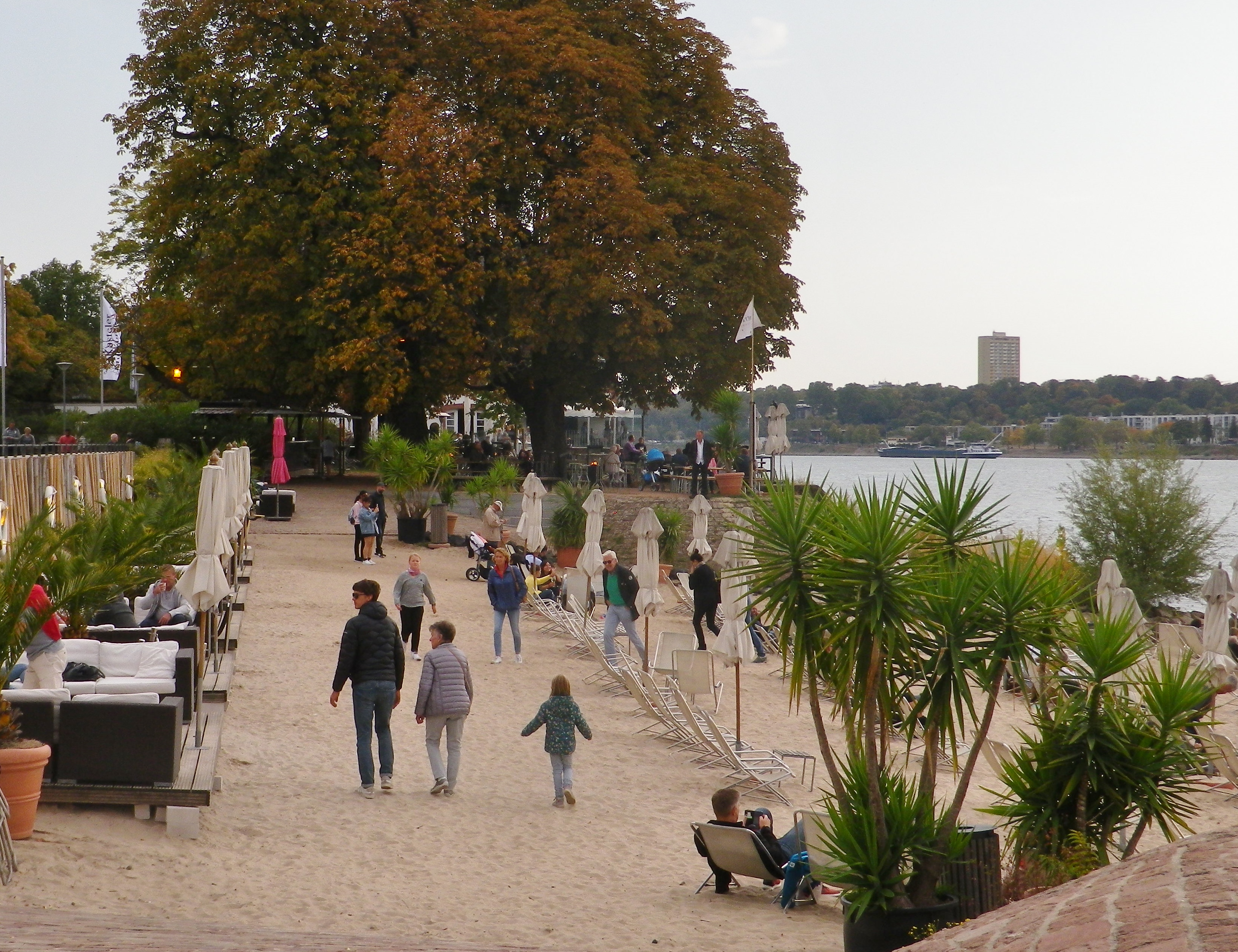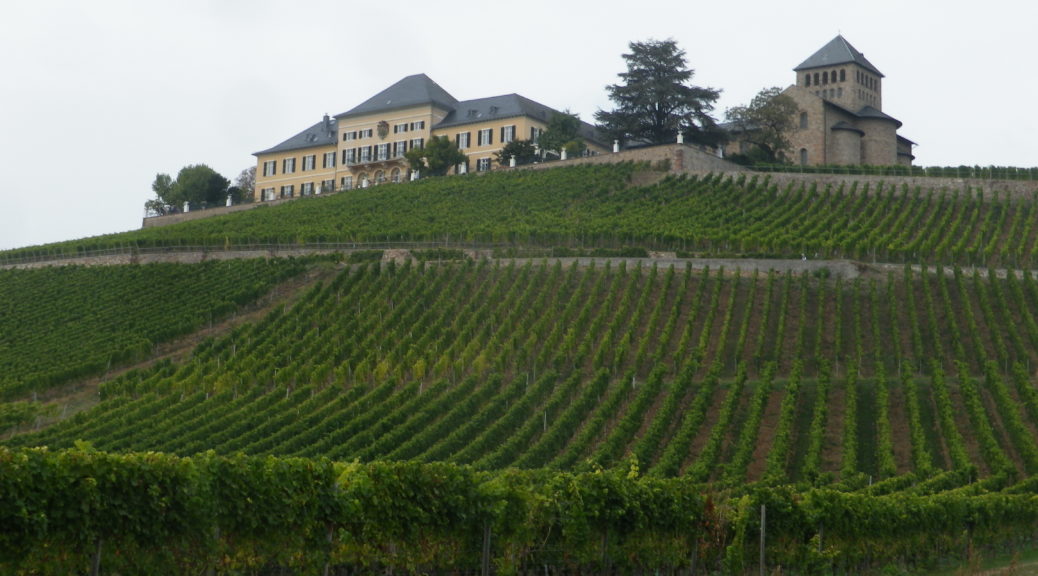After having hiked through the steep and forested slopes of the Mittelrhein, I continued my tour of the Rheingau wine region’s vineyards by bicycle. At Ruedesheim, I left the Rheingauer Riesling-pfad (see here), and hopped on a bike following the Rheingauer Riesling Route. The two trails cover the Rheingau vineyard area, but following somewhat different routes.
I was immediately struck by how different the wine area upriver from Ruedesheim is from that downriver of it. Upriver from Ruedesheim, the world heritage site of the “Mittelrhein” ends. The obvious difference is that the river suddenly opens up again. The narrow chasm defining the romantic middle Rhine with its vertiginously steep slopes disappears, replaced by gentler vine-bearing slopes. Cities soon replace quaint villages, and the river takes on a more business-like aspect, industry, ports for shipping, and riverside loading facilities.
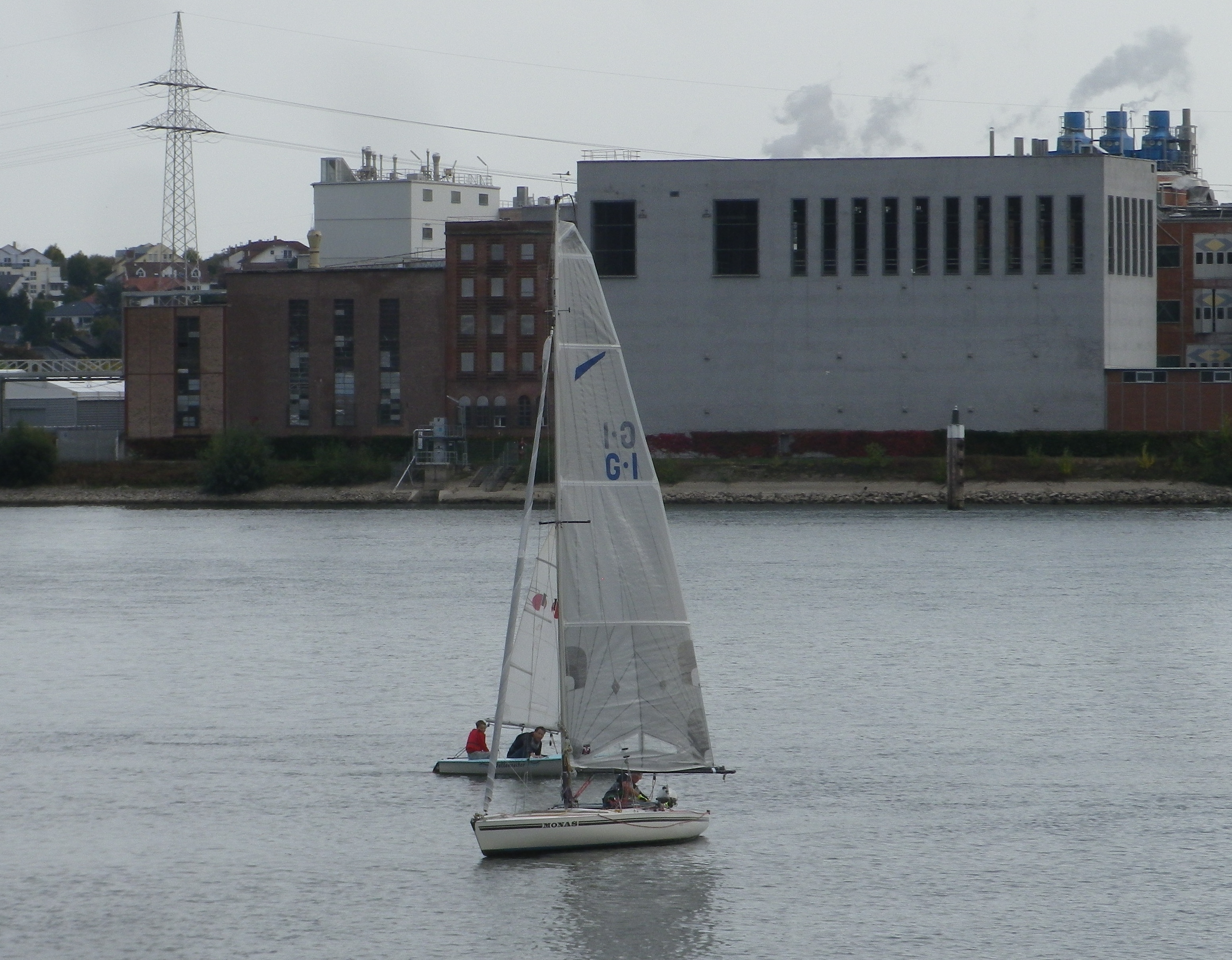
From Ruedesheim, the cycling trail leaves the river, and heads into the lower hills. Passing through kilometer after kilometer of vineyards, wine lovers will follow the trail to enjoy a unique perspective on Schloss Johannisberg, famed as the birthplace of Spaetlese. The Spaetlese (late-harvest) Riesling, a super smooth and unctuously delicious wine, was allegedly discovered when the harvest was delayed one year because the monks did not receive authorization to harvest the grapes until late in the season. In fact, part of this itinerary follows that of a longer trail itinerary retracing the route of the messenger. (See the Nutshell for details.)
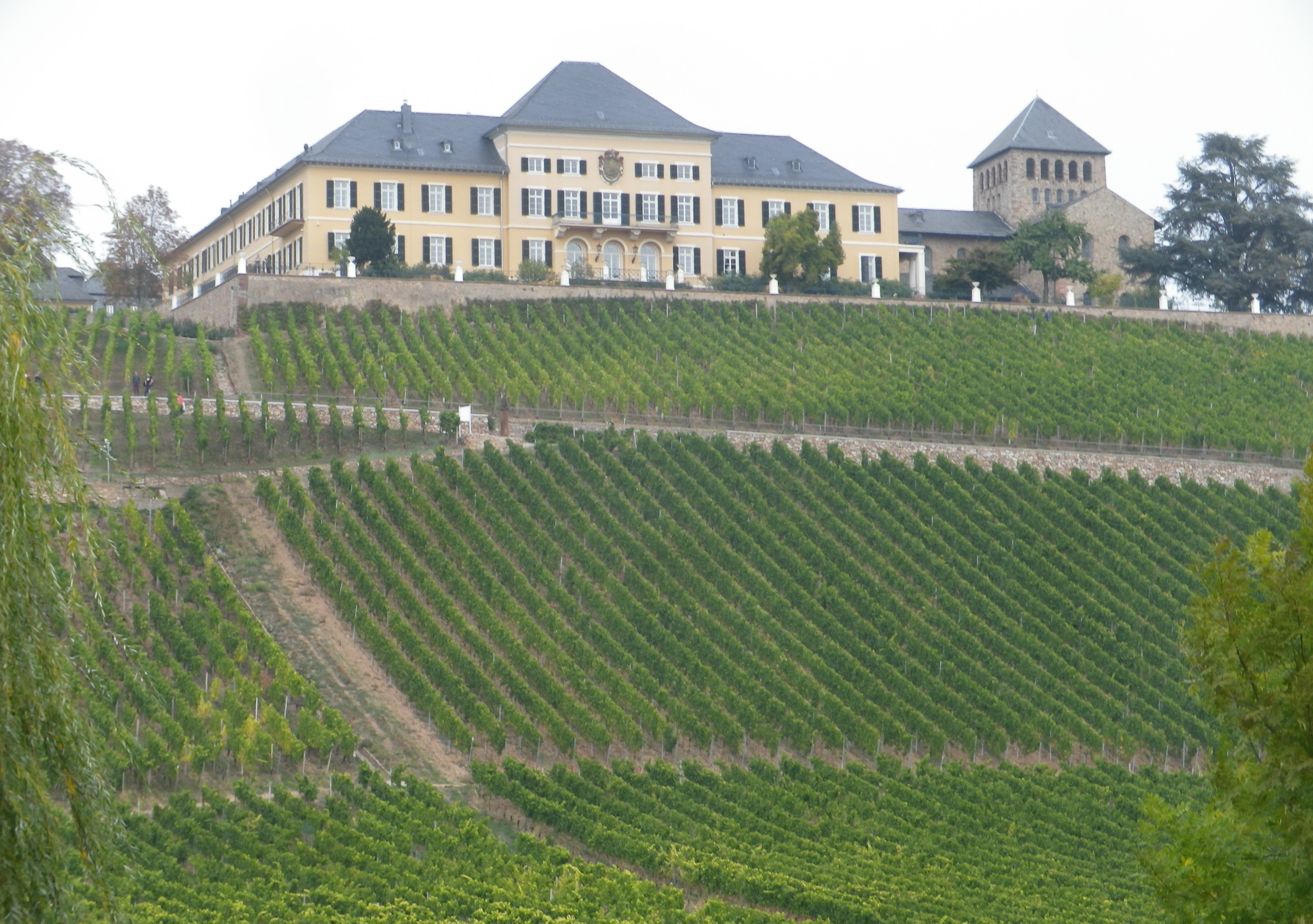
Continuing south, within a few minutes Schloss Vollrads comes into view. While it is slightly off the trail, it is worth the short detour. This winery is less experienced than Schloss Johannisberg, having made wine for only about 800, versus 900, years! Nonetheless, its Rieslings, ranging from classic, to its old vines and “great growths,” to its Spaetlese, are just as highly esteemed in wine circles.
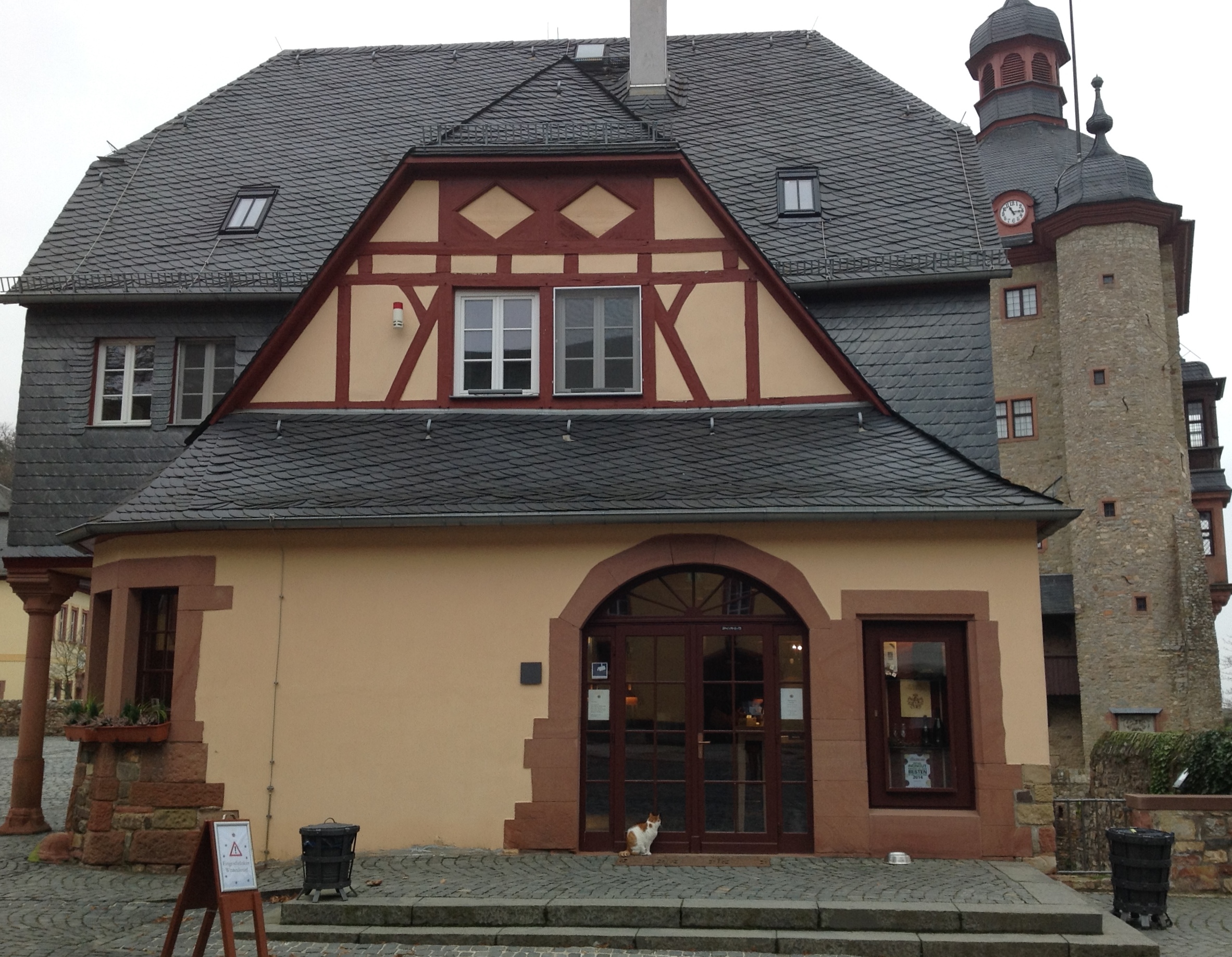
From the small village of Oestrich, the trail heads inland. For the most part, the hills on this trail are only moderately challenging, with the final push uphill from Oestrich being the most difficult. It ultimately culminates at Kloster Eberbach, a famed Cistercian monastery, yet again another winery with an impressive reputation for its wines. The historic buildings are well preserved in its little draw, and the old cellar houses a shop for its wines. Its old gate house serves as a bistro, offering delicious food along with Kloster Eberbach wines.
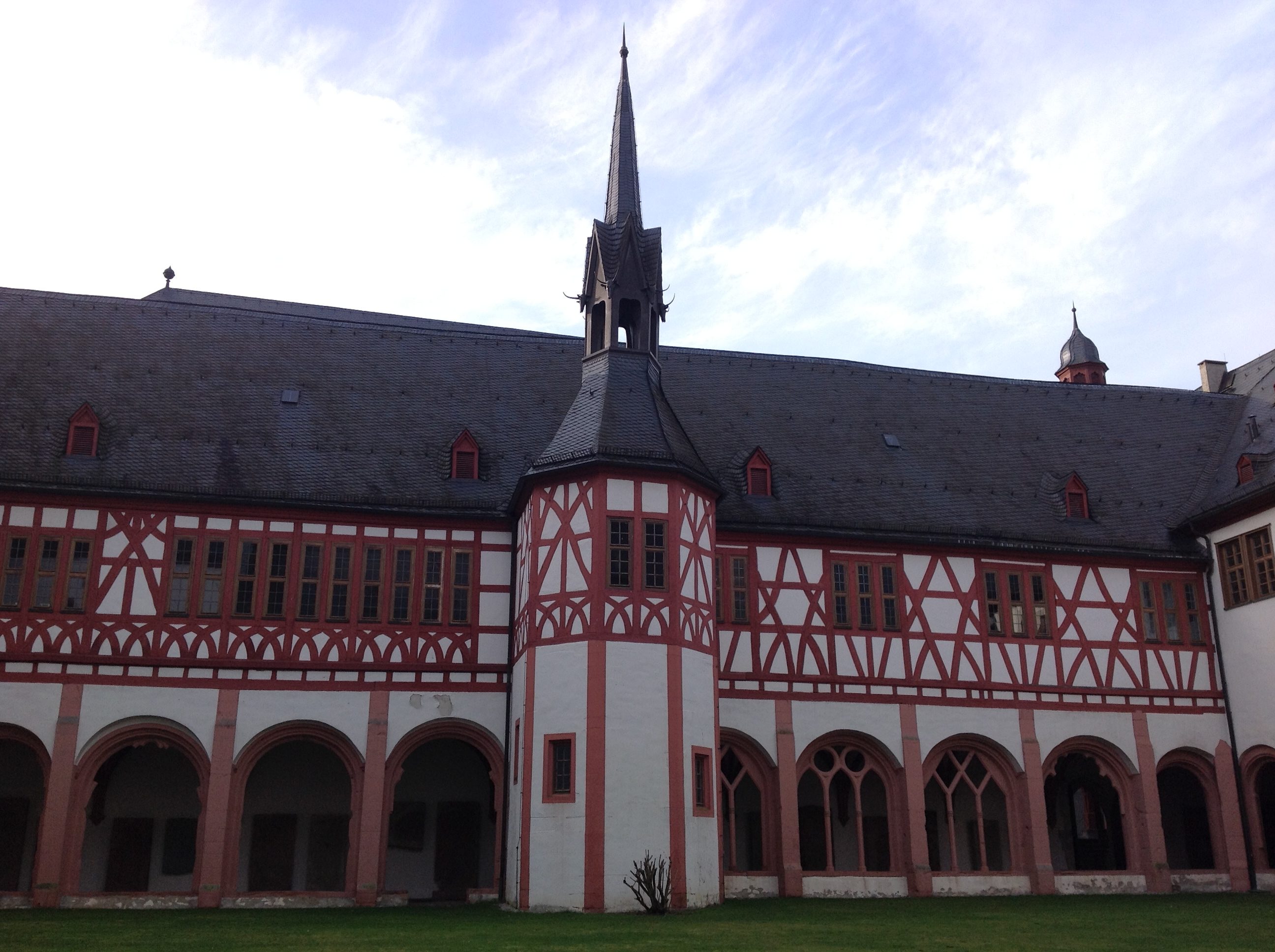
From here, it is all downhill through Kiedrich with its old church, to Eltville, with its many wine shops and bars. But my favorite wine bar came at Schierstein. Right on the Rhine, an old wine cask, served wine by the glass to customers who pulled up a lawn chair or blanket anywhere overlooking the river. From this point on, the trail would follow the river, even while passing through Wiesbaden, the largest city in the area, until its junction with the Main River.
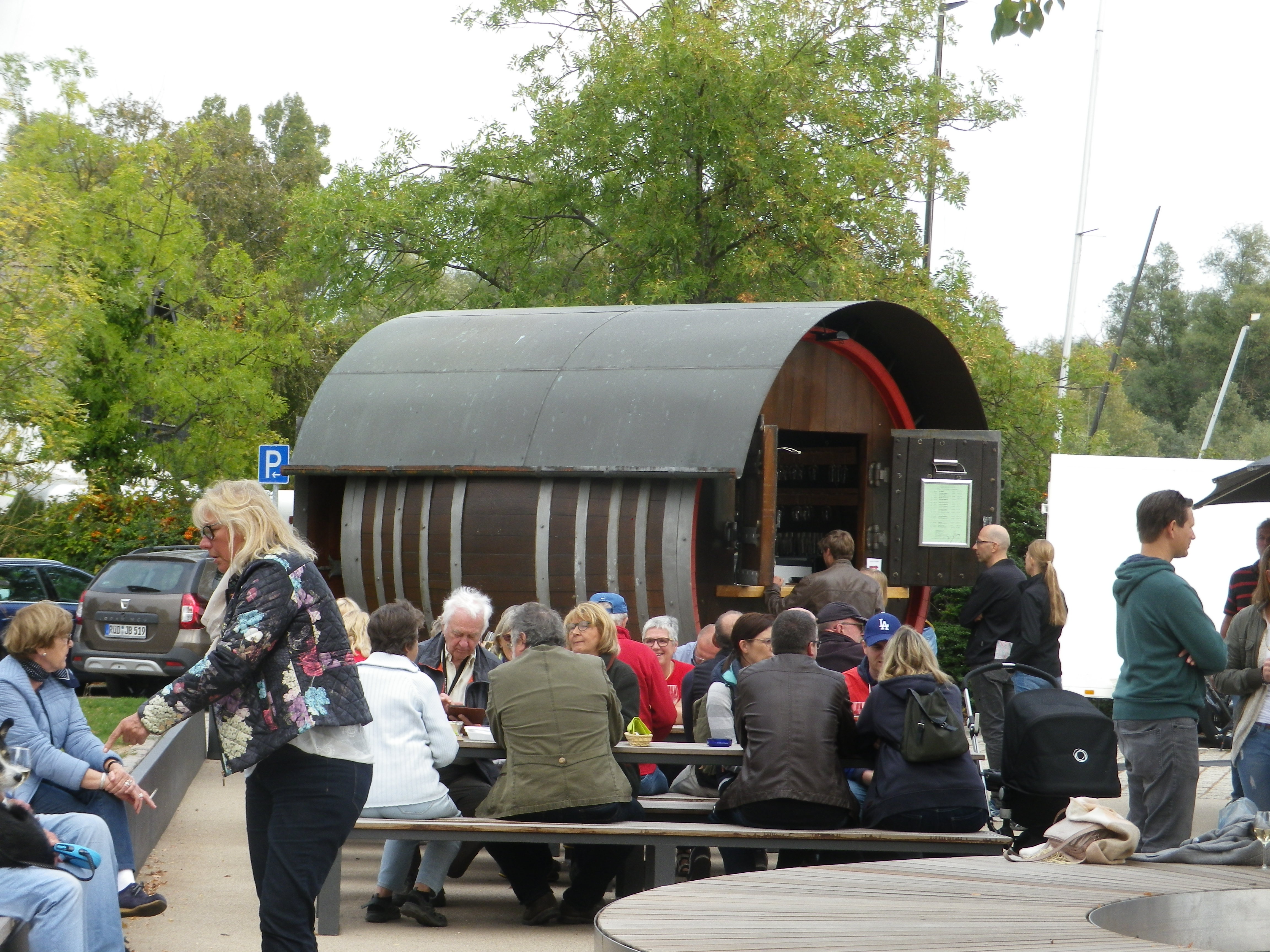
Here the trail left the Rhine and followed the Main, another famous wine river in Germany. From this point, the Rheingauer Riesling Route trail follows the Main Radweg (Main Cycle Path), yet another fantastic river cycling trail extending for over 200 kilometers. (Click here for the Nutshell on the Main Radweg.) Within minutes, I was cycling past the Queen Victoria monument set in the highly esteemed Hochheim vineyards. She, with her German family connections, helped introduce the region’s wines to England. Hochheim became well known in England for its wines. Collecting them became fashionable, and the English expression “to be in hock,” reflects the prices these wines commanded. Something to reflect upon while cycling through the vineyards to the trail’s end, and the official end of the Rheingau wine region, at Floersheim!
